Travelers tend to visit Italy for its food, history, landscape and culture rather than its beaches. Sometimes, like in the Puglia region down in the country’s heel, all three come together magically.
With the port of Bari as its capital, Puglia lies between the Adriatic and the Ionian Sea and has more than 800 kilometers of coastline.
For beach lovers, it’s a treasure trove of stunning strands, intimate rocky coves and wild, sandy shores, from the Gargano peninsula in the north to the stiletto heel of Salento in the south.
The seaside towns of Polignano a Mare and Gallipoli – not to be confused with the infamous World War I location in Turkey – are good places to start.
For good measure, we’ve thrown in a few more suggestions to complete our guide to some of the best beaches in Puglia when you travel there.
Polignano a Mare
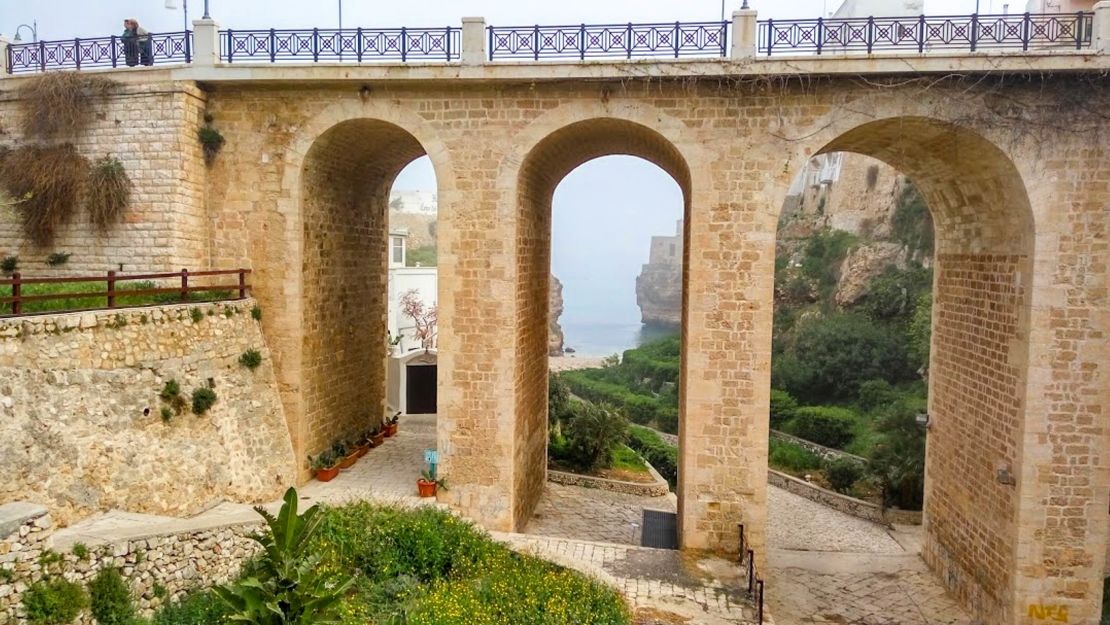
Perched above different layers of gray-black cliffs, Polignano a Mare was born from the sea. Legend says it was founded by a seafaring Roman commander, whose pet hawk went looking for land and settled on this huge, mushroom-shaped crag.
Today, the white-washed town – the birthplace of Domenico Modugno, who penned the hit song “Volare” – offers winding streets for wandering, churches for browsing and sea views for gawping.
The main beach, Lama Monachile, looks like a hemmed-in fjord but is the mouth of an extinct river, spanned at the inland end by a Roman bridge. Once the ancient Roman harbor, in summer it’s a buzzy sea piazza.
When the small beach gets overcrowded locals escape to favorite terraces on the cliffs overlooking the sand. It’s for good reason Polignano is host to international cliff-diving competitions.
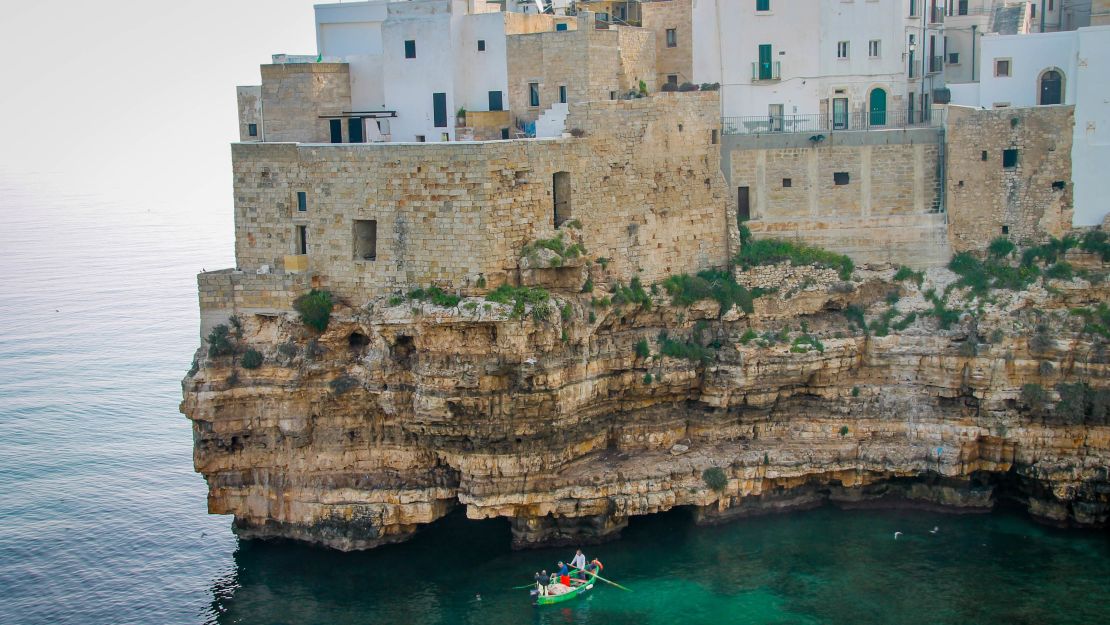
“We’re sea goats who defy gravity laws,” says local photographer Francesco Scagliusi. He suntans on a chair made of nets that clings to the reef.
Inside the limestone cliffs lurk a maze of tunnels and caverns carved out by erosion.
Dorino’s boats (Lungomare Domenico Modugno; +39 329 646 5904) will take you snorkeling in the grottoes of the town’s belly, where nuns and princesses used to bathe. There are hidden treasures, secret inlets and salt stalactites.
Kids are weaned on I Rizz (sea urchins) which they catch and slurp down while swimming around the rocks, knife in hand.
There are sea urchin stands where elders called U’ Cazzirizz preserve the art of pulling out the orange eggs to spread on focaccia.
Fishermen-chefs at Pescaria (Piazza Aldo Moro, 6/8; +39 080 424 7600) prepare huge turtle-shaped panini stuffed with tuna and salmon carpaccio mixed with local premium purple carrots, potatoes and fennel – great for a beach takeaway.
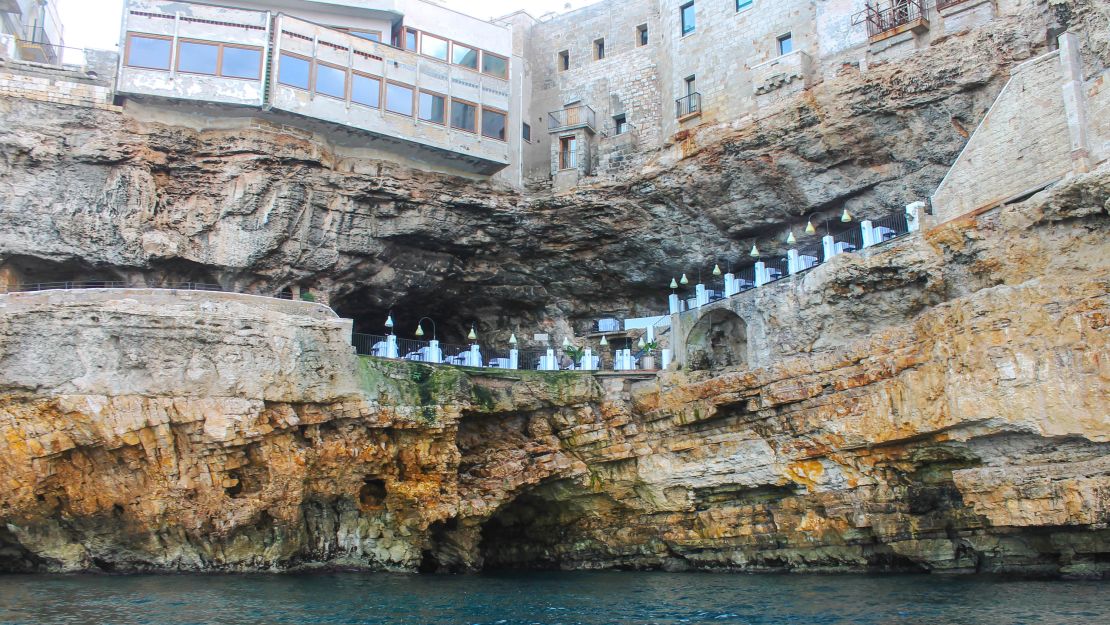
Raw fish platters are served at Grotta Palazzese (Via Narciso 59; +39 080 424 0677), a chic grotto hotel-restaurant with a rock platform suspended above the sea.
Da Tuccino (Via Santa Caterina 69/F; +39 080 424 1560) makes grouper and redfish carpaccio, and ear-shaped orecchiette pasta with squid ink and turnip tops.
Il Covo dei Saraceni (Via Conversano 1; +39 080 424 1177) is another resort-tavern with great views, renowned for fish soup and tiny fried spillo (needle) calamari served on a bed of fava beans.
B&B Giovì Relais (Via XXIV Maggio 7; + 39 080 425 1510) is a restyled 1800s palazzo featuring a grotto spa with pool.
Polignano is also renowned for its superb ice creams. The cono tuffato (dipped wafer cornet) is plunged into whip cream before being served.
Crazy twists of potato and carrot flavors can be savored at Bar Turismo (Via Pompeo Sarnelli), Bella Blu (Via Martiri di Dogali 20; +39 080 426 5705), Bar Peppino (Via Roma, 88, +39 080 424 1066) and Gusto Caruso (Via Martiri di Dogali 3; +39 080 321 8232).
Rosolio is a liqueur made of wild fennel, nuts and laurel. Red mulberry, prickly pear and fig slushies are refreshing treats.
For espresso lovers there’s Caffé Speciale at Super Mago del Gelo (Piazza Garibaldi, 22), spiced up with a secret almond liqueur, lemon peel and whipped cream. Live evening music is at Begula Club (Piazza Giuseppe Garibaldi 15; +39 080 425 1081).
Gallipoli: the Pearl of the Ionian Sea
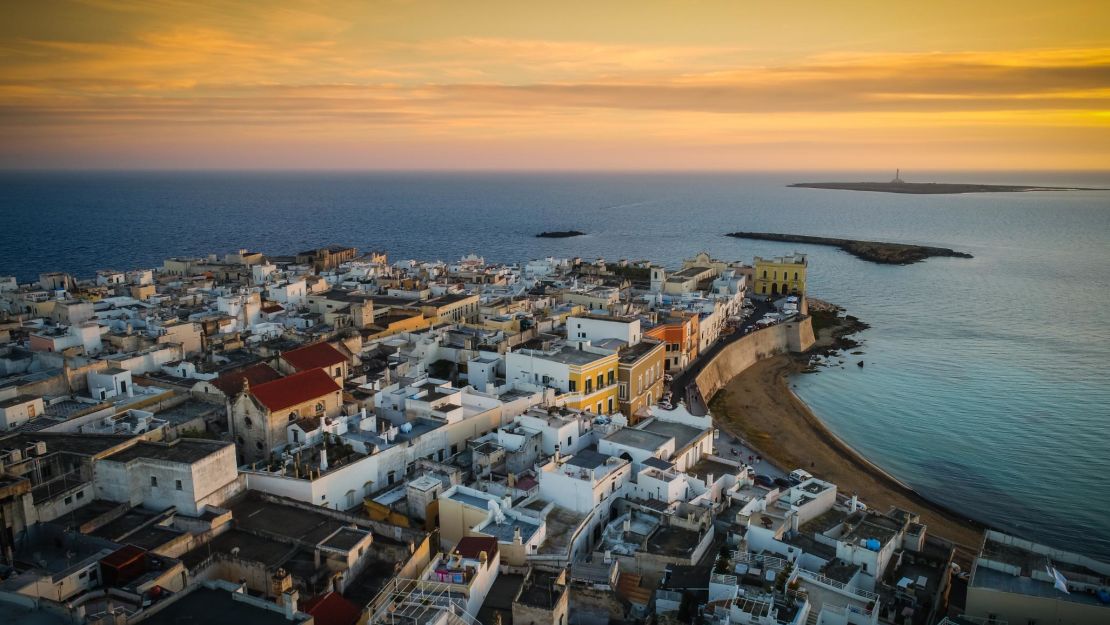
Its name stems from the Greek kalé polis – the “beautiful town” – and hints at why ferocious pirates and invaders have tried to conquer it across the centuries.
Set deep in Salento, and dubbed the “Pearl of the Ionian Sea”, its vibrant harbor in the 1800s was the Mediterranean hub of lamp oil and spice merchants.
Locals are proud of having first patented what today is globally known as Marseille soap. “The French stole it from us,” says resident Giuseppe Capraro.
The big pull for beach fans is La Purità, a crescent-shaped slice of the Maldives with soft, golden sand and pebbles below the walls of the posh part of town. The sea is fluorescent blue.
Named after the nearby church of the longshoremen’s fraternity, it’s Gallipoli’s beating heart.
Café del Mar (Riviera Nazaro Sauro) has tables and exotic thatch umbrellas on the old bastion. Buena Vista (Riviera Sauro) makes pizza finger-foods to munch in the evenings, when the blazing sky turns the sea red.
At sunset fishermen at the harbor serve white-wine aperitifs with fishy delicacies.
Inside the walled town Blanc Café (Via XXIV Maggio 19; +39 083 326 3499) is an elegantly restyled old oil warehouse popular for its cocktails.
Gallipoli’s gourmet specialties are its purple, tasty giant shrimps and the Gallipolina fish broth with pasta.
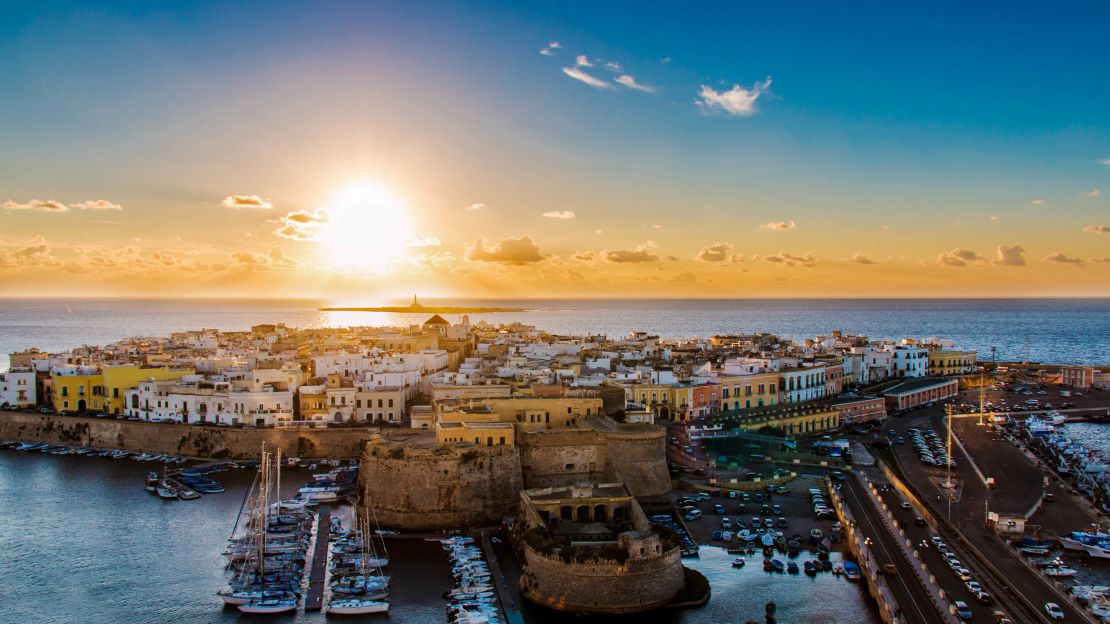
Restaurant picks include Trattoria La Puritaté (Via S.Elia 18; +39 083 326 4205) with view of the beach, Portolano (Riviera C. Colombo; +39 083 326 2576) and Osteria Briganti (Via Antonietta de Pace, 107; +39 083 326 1166).
The swordfish fair in August lures addicts from across the world.
The nearby Isle of Sant’Andrea with its bright corals is a divers’ mecca. Day boat trips along the coast (+39 083 252 1877) come with cocktails, munchies and Pizzica folk music.
Gallipoli is heaven for the sweet of tooth, too.
Meringue cakes and the famous pasticciotto Buccunotto, a cream-filled bun shaped like a vessel, can be tasted at Pasticceria Martinucci (+39 083 326 1455) and Vecchio Ingrosso (Via C. Colombo Riviera 19; +39 389 317 8214).
Buccunotto comes in different flavors: pistachio, Nutella, nuts and black cherries.
The Divini Amore are almond paste oval cookies covered in sugar icing, an old brides’ recipe.
Underground olive oil mills (Via Antonietta de Pace 87; +39 083 326 4242) and an Anjou castle are worth a visit.
Hotel picks include 5-star Palazzo del Corso (Corso Roma 145; +39 083 326 4040) and luxury resort Relais Corte Palmieri (Corte Palmieri 3; +39 083 326 5318), a 1700s mansion with an exotic ambiance.
Torre dell’Orso
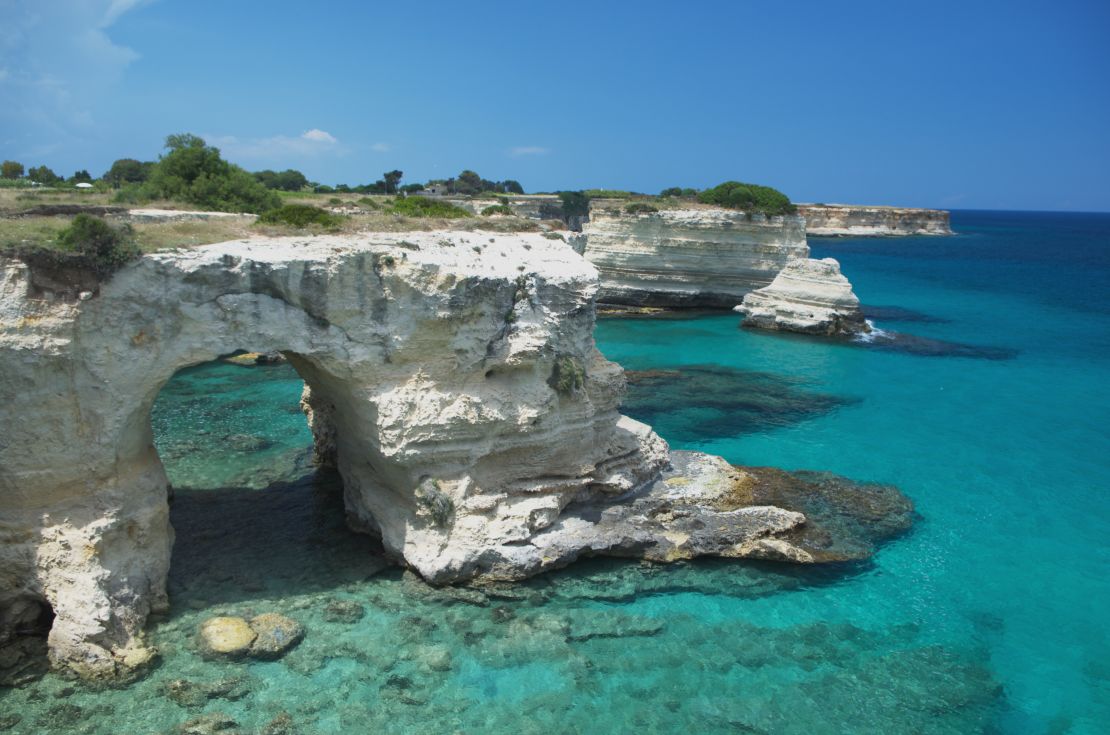
South east of the city of Lecce is a crescent-shaped sand beach famous for its twin sea stacks, dubbed the “Two Sisters,” which rise near the shore. Sunbathers enjoy swimming over to the rocks, a spot loved by cliff divers, too. A thick pine wood behind offers picnic spots and cool shelter from the burning summer heat.
The beach has shallow waters, enclosed by two cliffs that form a small bay.
Torre Guaceto
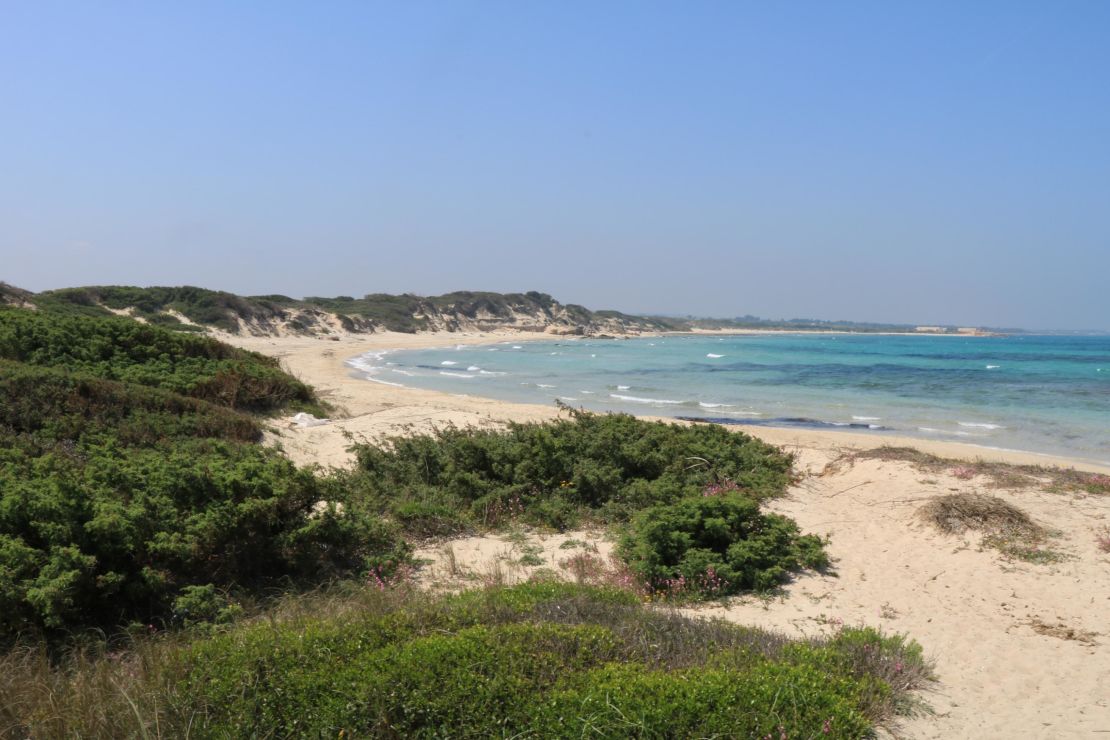
This beach just north of Brindisi features the crumbly ruins of a medieval pirate lookout tower surrounded by baby-powder sand and palms.
Rocks sticking out of the sea and dunes like mushrooms are used as loungers by locals. It’s part of a natural protected marine reserve inhabited by a variety of birds and dotted with archaeological ruins of cave men dwellings.
Gargano
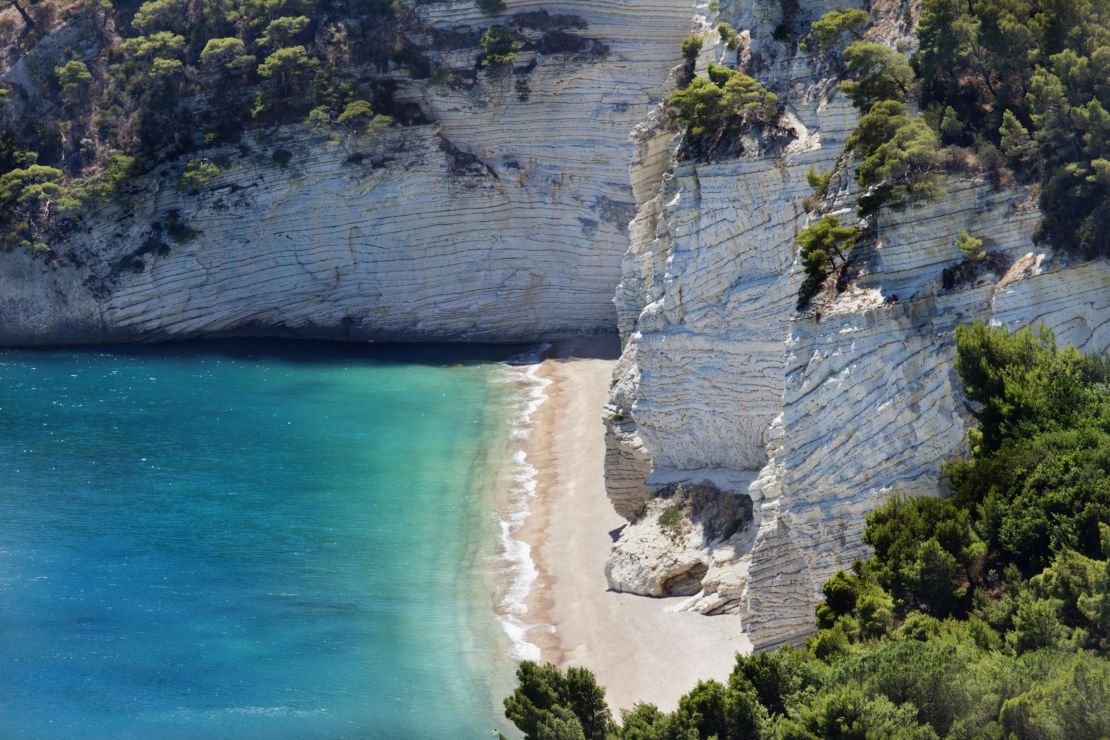
Gargano National Park juts out like a spur on Italy’s boot at the top of Puglia. The promontory pushes into the Adriatic with rocky inlets and beaches that stretch for 150 kilometers. Lush forests mix with patches of typical Mediterranean bush. The two main bays are Pugnochiuso and Portopiatto, enclosed by pine woods and natural rock arches.
Alimini Lakes
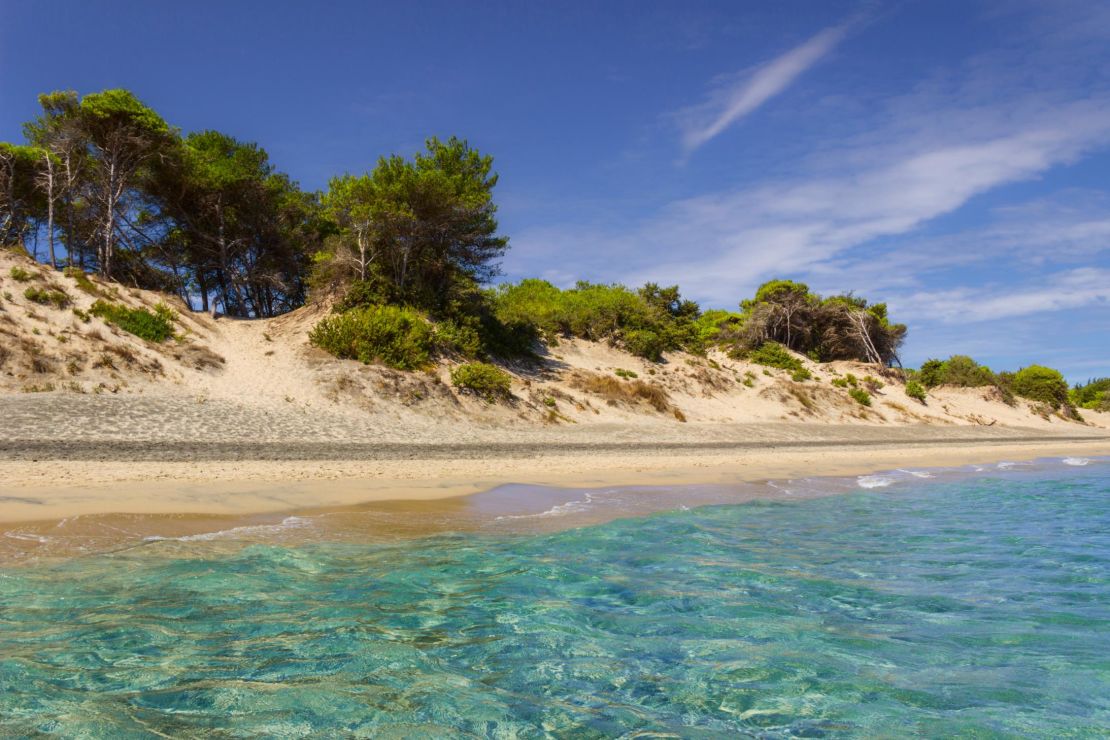
The two Alimini Lakes are located in a protected oasis in the southern part of Lecce province, just north of the charming town of Otranto.
A long beach of fine white sand and clear turquoise waters can be found where the saltwater Alimini Grande pours into the sea.
Abandoned wooden fishing boats decorate the shore, reachable after walking through thick pine woods. Turks’ Bay (Baia dei Turchi) is the most pristine spot. Legend has it this is where feared Ottoman pirates landed to sack the nearby white-washed village of Otranto.
Porto Selvaggio
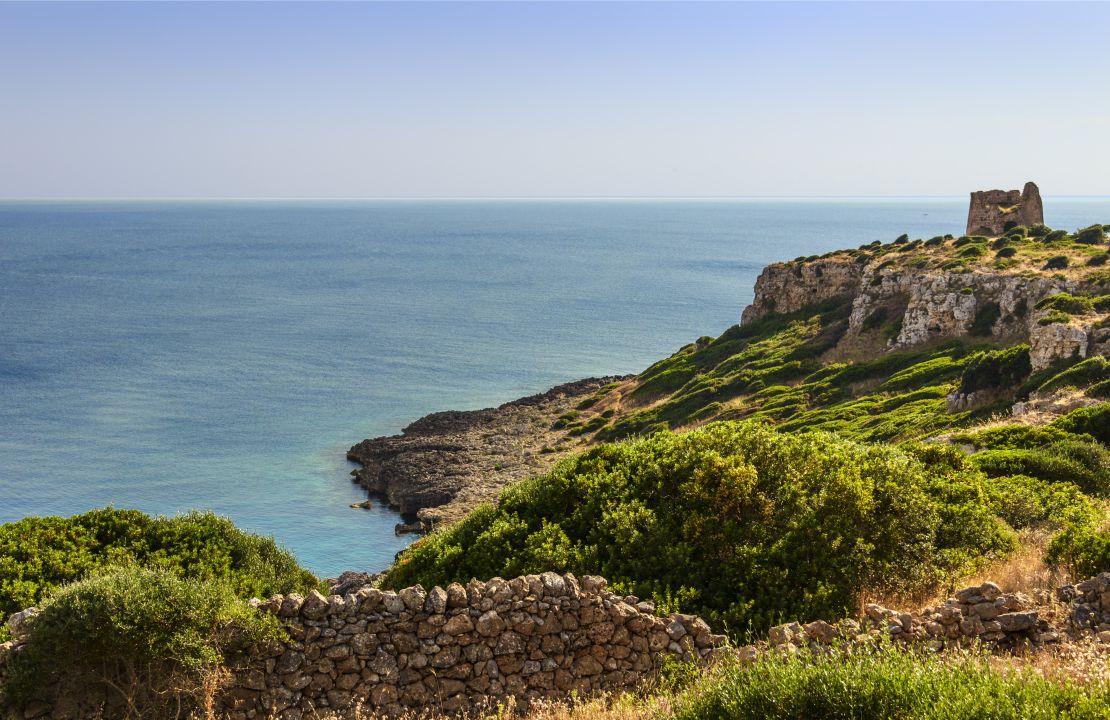
On the west coast of Salento north of Gallipoli lies another protected marine area. Its name “selvaggio” (wild, in Italian) says all you need to know about this unspoiled corner of Puglia.
A 20-minute walk through a fluorescent green forest is the only way to get to the tiny pebble beach surrounded by low cliffs. More routes cut across the forest to other solitary inlets.
Silvia Marchetti is a Rome-based freelance reporter. She writes about finance, economics, travel and culture for a wide range of media including MNI News, Newsweek and The Guardian.











